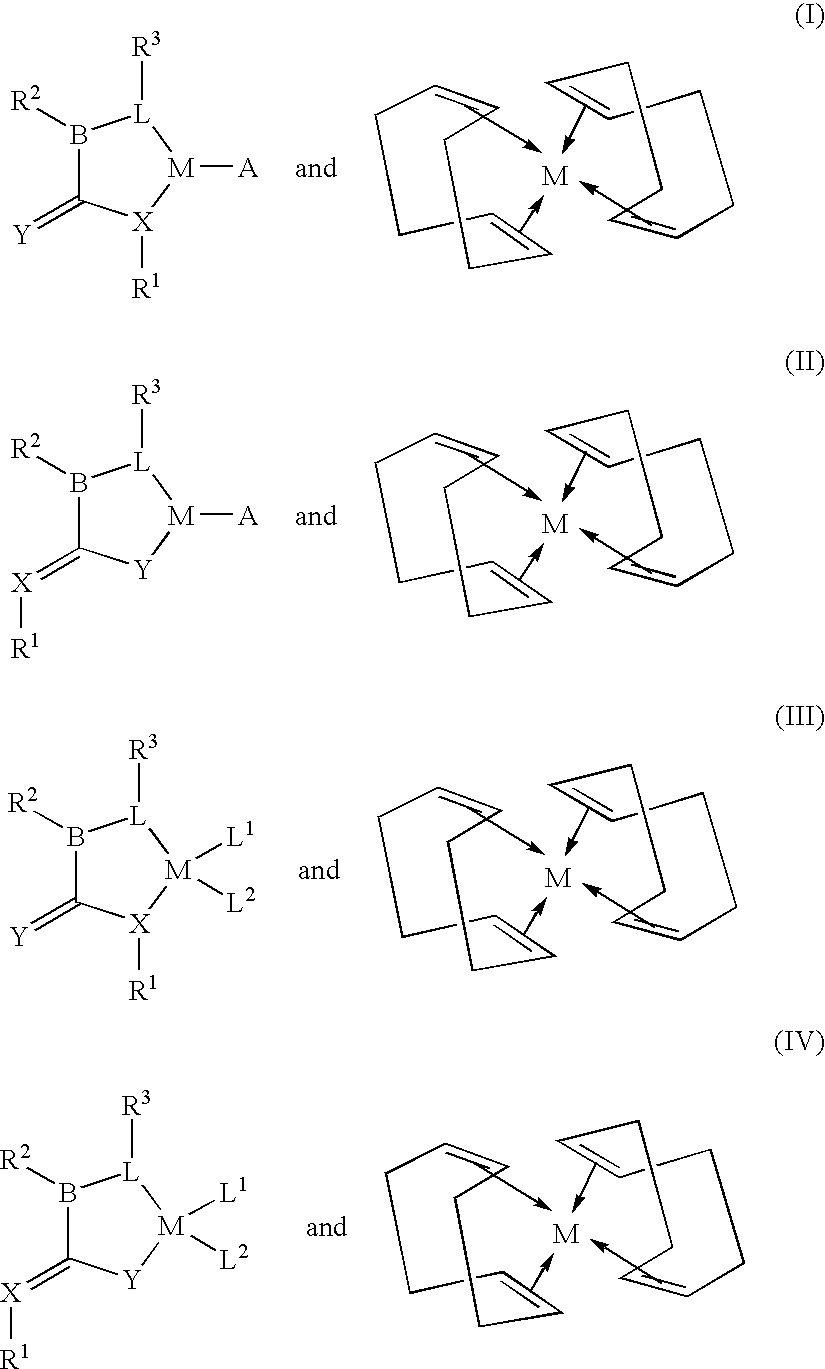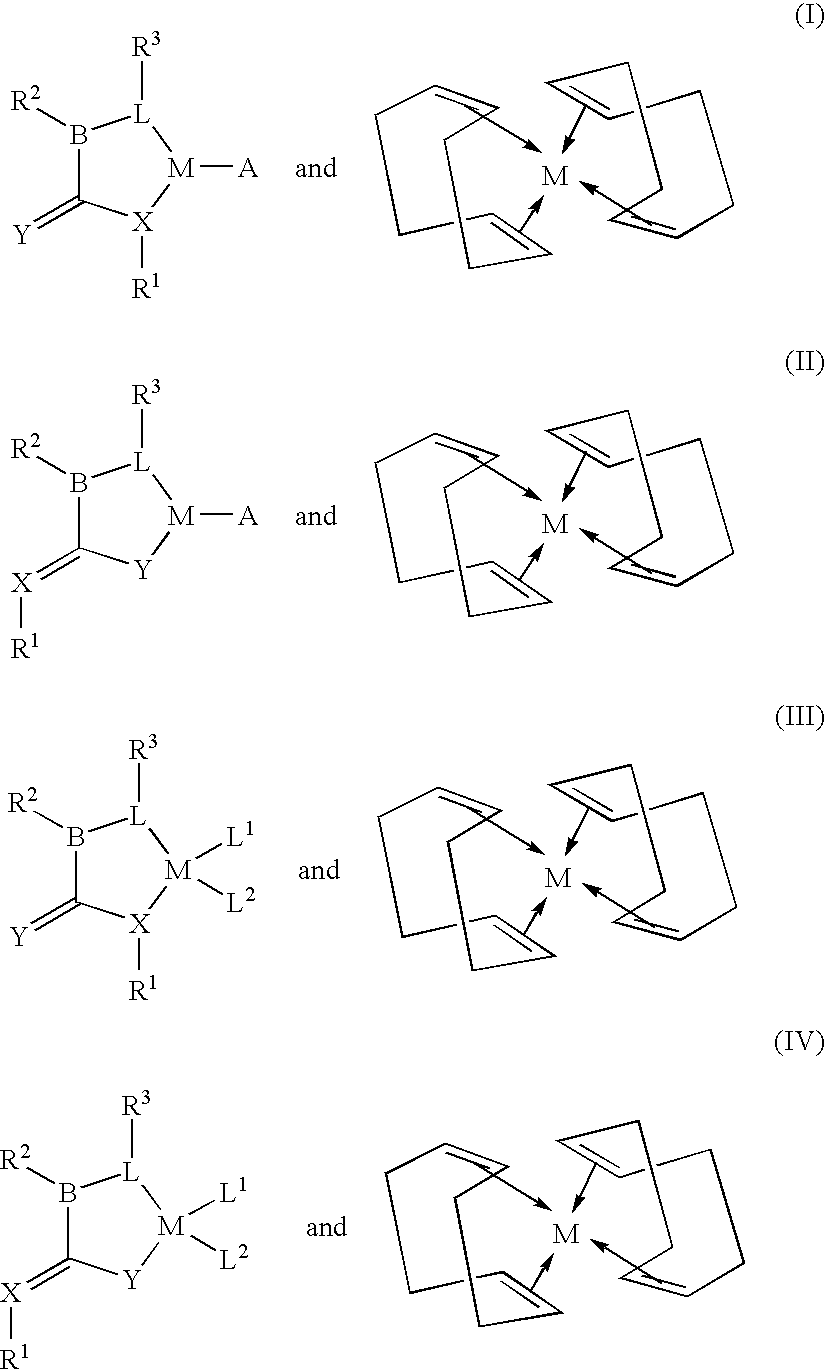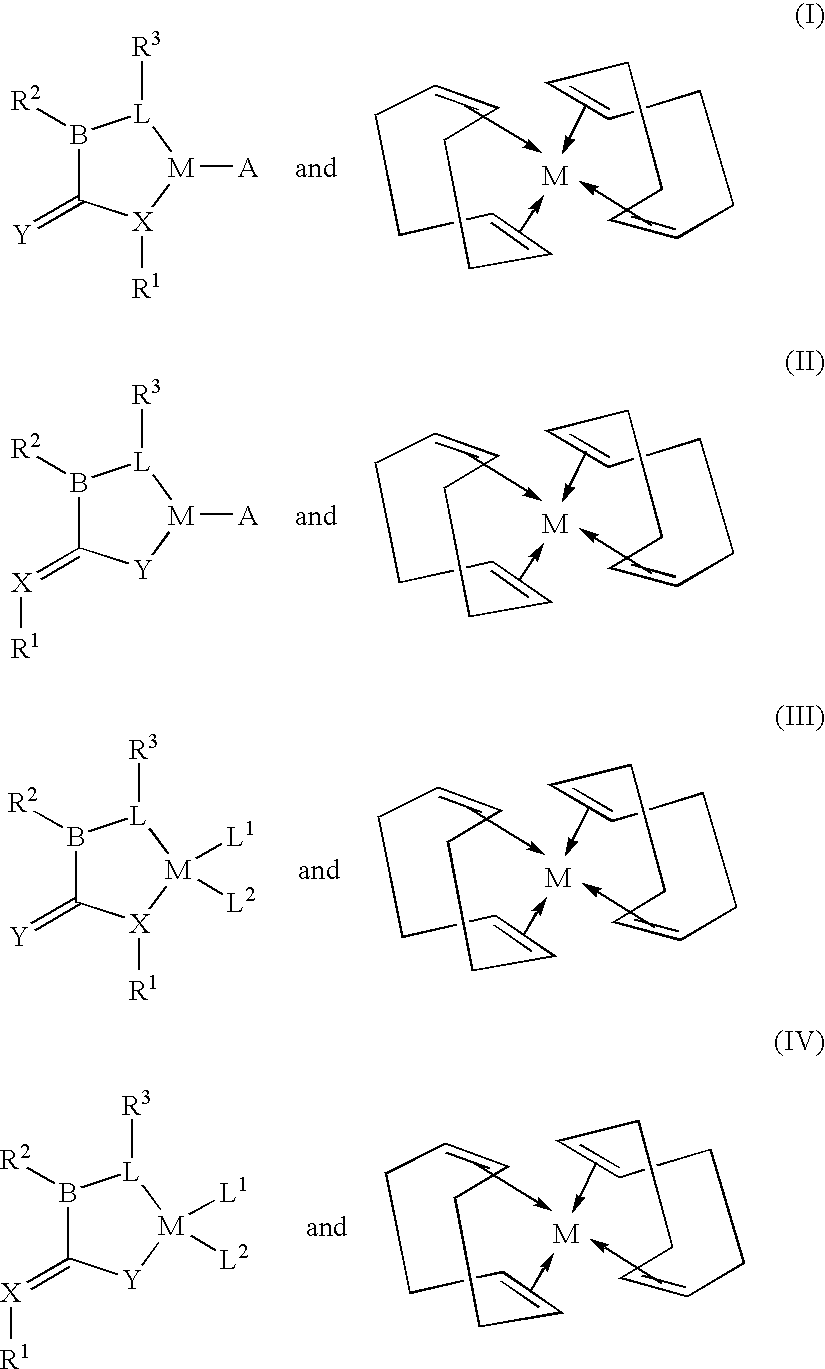Metal catalyst for olefin polymerization and co-polymerization with functional monomers
a technology of olefin polymerization and functional monomers, which is applied in the direction of catalyst activation/preparation, physical/chemical process catalysts, chemical/physical processes, etc., can solve the problems of reducing the activity of methylaluminoxane activated catalysts, prone to induction period, and thermal instability of catalyst systems
- Summary
- Abstract
- Description
- Claims
- Application Information
AI Technical Summary
Problems solved by technology
Method used
Image
Examples
example 2
[0039] A glass reactor was loaded inside a glove box with L(.sup.iPr.sub.2)Ni(.eta..sup.l-CH.sub.2Ph)(PMe.sub.3) (about 10 .mu.mol; 1 g of 8.77 mM solution in toluene), Ni(COD).sub.2 (about 25 .mu.mol; 1.25 g of 17.3 mM solution in toluene) and toluene (about 23.7 g), such that the final volume of the toluene solution was about 30 mL. The glass reactor was sealed inside the glove box and taken out. Ethylene was fed continuously into the reactor at about 100 psi and the pressurized reaction mixture was stirred at about 20.degree. C. Ethylene was vented after about 20 minutes and acetone was added to quench the polymerization. The precipitated polymer was collected by filtration and dried under high vacuum overnight. About 1.213 g of polyethylene polymer was obtained. The activity of the catalyst was about 446 kg mol.sup.-1 h.sup.-1.
[0040] Polymer Characterization: GPC Analysis (o-dichlorobenzene, about 135.degree. C.): M.sub.w=about 1.51.times.10.sup.5, M.sub.w / M.sub.n=about 1.3. DSC...
example 3
[0041] A glass reactor was loaded inside a glove box with L(.sup.iPr.sub.2)Ni(.eta..sup.l-CH.sub.2Ph)(PMe.sub.3) (about 10 .mu.mol; 1 g of 8.77 mM solution in toluene) and Ni(COD).sub.2 (about 50 .mu.mol; 2.5 g of 17.3 mM solution in toluene) and toluene (about 22.45 g) such that the total volume of the toluene solution was about 30 mL. The glass reactor was sealed inside the glove box and was attached to a vacuum / nitrogen line manifold. Ethylene was fed continuously into the reactor at about 100 psi and the pressurized reaction mixture was stirred at about 20.degree. C. Ethylene was vented after about 20 minutes and acetone was added to quench the polymerization. The precipitated polymer was collected by filtration and dried under high vacuum overnight. The reaction produced about 1.255 g of polyethylene polymer. The activity of the catalyst was about 454 kg mol.sup.-1 h.sup.-1.
[0042] Polymer Characterization: GPC Analysis (o-dichlorobenzene, about 135.degree. C.): M.sub.w=about 1....
example 4
[0043] A glass reactor was loaded inside a glove box with Ni(COD).sub.2 (about 10 .mu.mol; 0.5 g of 17.3 mM solution in toluene) and toluene (about 25.45 g) such that the total volume of the toluene solution was about 30 mL. The glass reactor was sealed inside the glove box and was attached to a vacuum / nitrogen line manifold. Ethylene was fed continuously into the reactor at about 100 psi and the pressurized reaction mixture was stirred at about 20.degree. C. No consumption of ethylene was observed.
PUM
| Property | Measurement | Unit |
|---|---|---|
| Angle | aaaaa | aaaaa |
| Fraction | aaaaa | aaaaa |
| Fraction | aaaaa | aaaaa |
Abstract
Description
Claims
Application Information
 Login to View More
Login to View More - R&D
- Intellectual Property
- Life Sciences
- Materials
- Tech Scout
- Unparalleled Data Quality
- Higher Quality Content
- 60% Fewer Hallucinations
Browse by: Latest US Patents, China's latest patents, Technical Efficacy Thesaurus, Application Domain, Technology Topic, Popular Technical Reports.
© 2025 PatSnap. All rights reserved.Legal|Privacy policy|Modern Slavery Act Transparency Statement|Sitemap|About US| Contact US: help@patsnap.com



